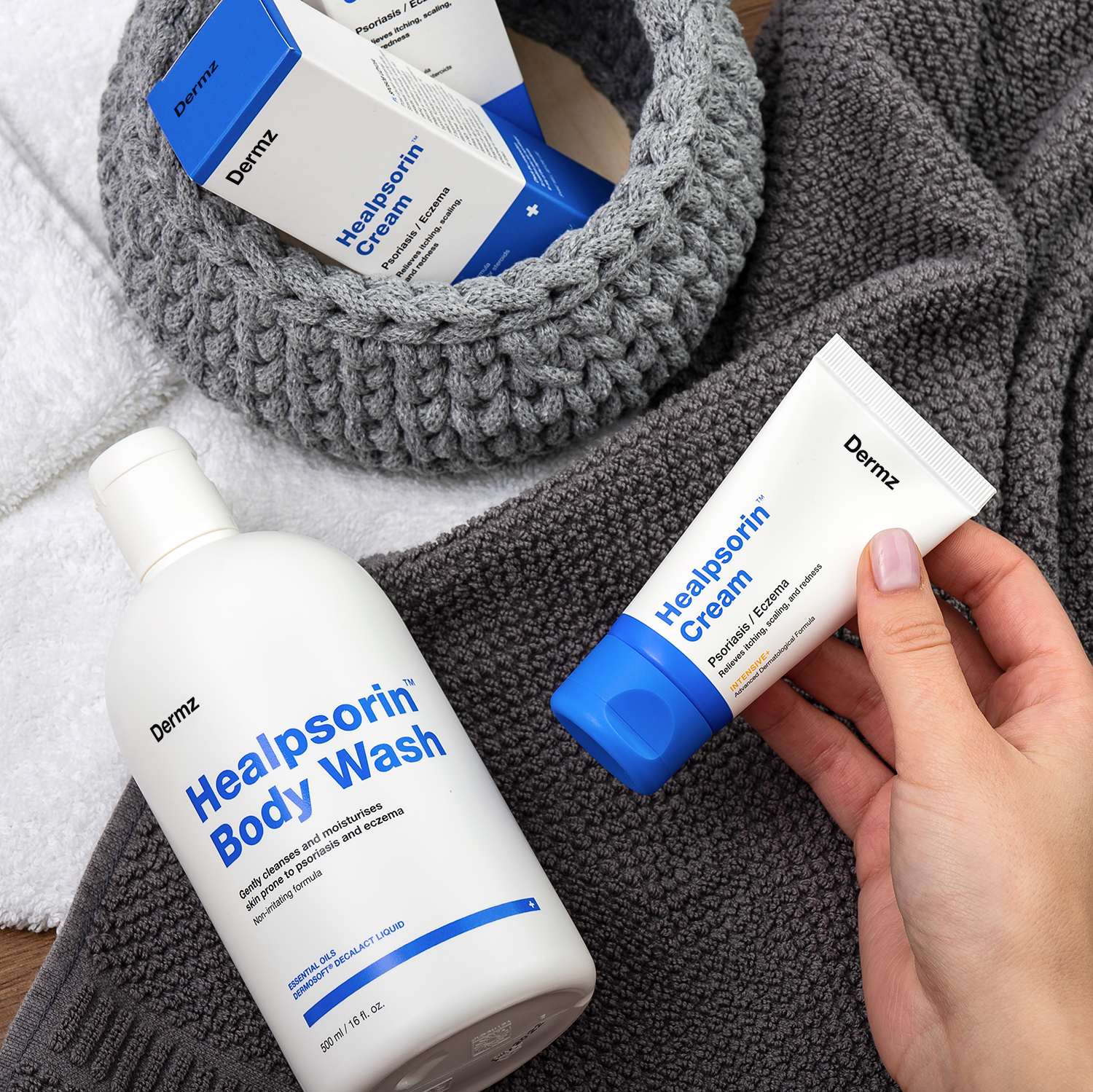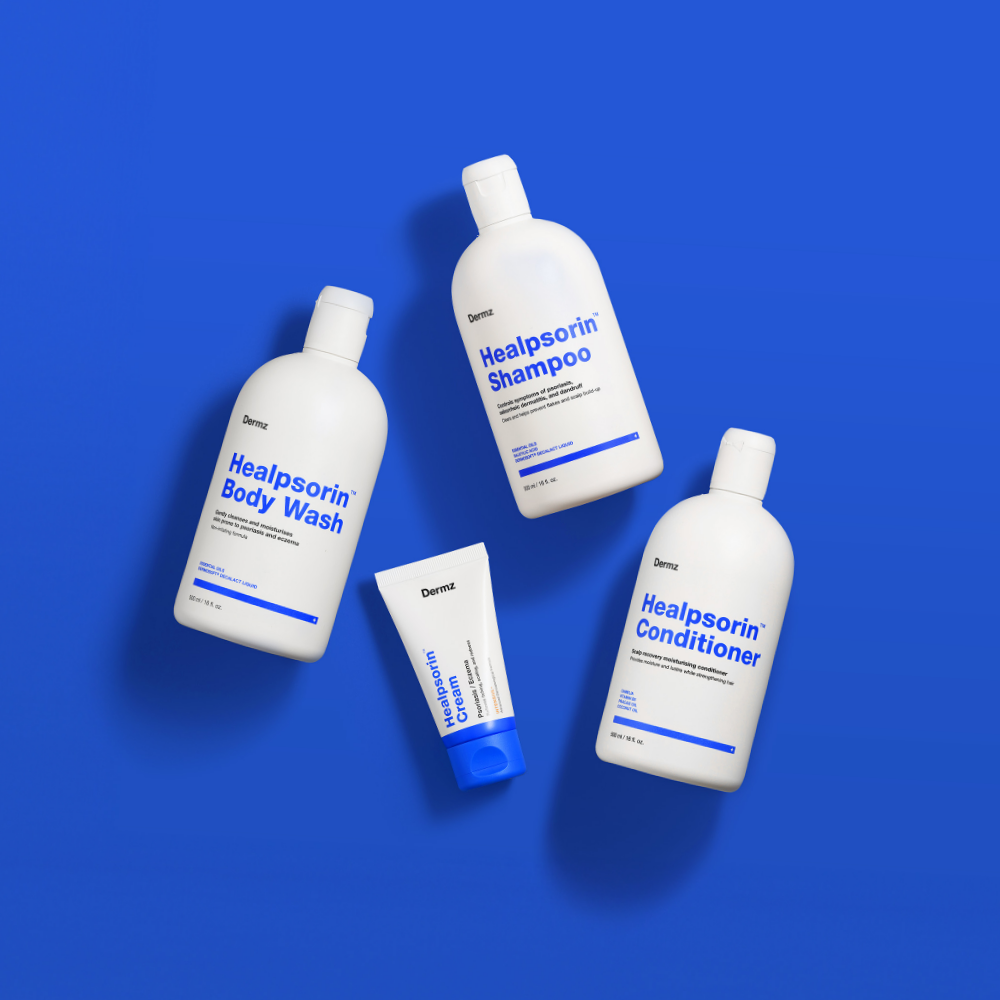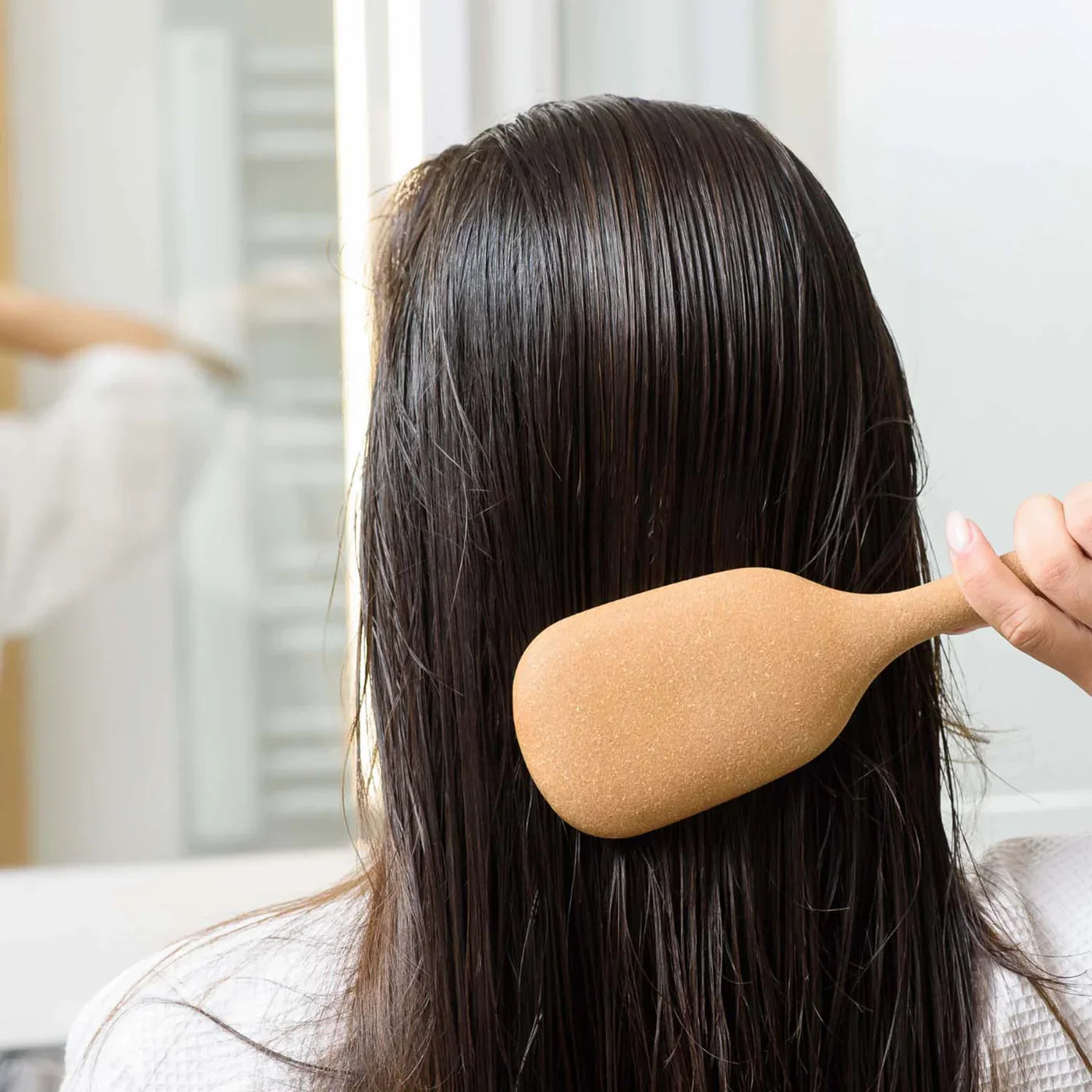Winter turns dry air, wind and rapid temperature shifts into daily triggers for atopic dermatitis, eczema and psoriasis. The skin barrier weakens, transepidermal water loss rises and itching escalates. A targeted routine built around a cream for atopic dermatitis, eczema cream or psoriasis cream plus an emollient body balm keeps skin calm and comfortable.
Winter skincare for atopic dermatitis, eczema and psoriasis: why symptoms spike
Cold, low-humidity air and heated interiors strip lipids from the stratum corneum. As the barrier thins, transepidermal water loss increases, nerve endings are more exposed and the itch-scratch cycle intensifies. Psoriatic plaques crack more easily; atopic and eczematous skin becomes tight, flaky and red. Friction from clothing and abrupt hot-to-cold transitions amplify micro-inflammation.
Beyond discomfort, winter stressors also disrupt the skin microbiome, making flares more frequent and longer. That’s why switching to dermocosmetics designed for reactive skin matters: a well-formulated cream for irritated and red skin (e.g., eczema cream, psoriasis cream, cream for atopic skin) paired with a barrier-building emollient helps restore lipids, reduce water loss and dial down itching.
Basic rules of winter skincare for sensitive and atopic skin
Daily habits are just as important as the right dermocosmetics. Following a few simple adjustments helps reduce flare-ups of atopic dermatitis, eczema and psoriasis.
- Short, lukewarm baths – long, hot showers strip natural oils, worsening dryness. Choose quick rinses in warm water.
- Gentle fabrics – skip rough wool directly on skin. Cotton or bamboo reduce friction and irritation.
- Targeted moisturising – apply a cream for dry skin or a cream for atopic dermatitis right after bathing, while the skin is still damp.
- Emollient protection – reinforce hydration with a body balm for sensitive skin or a body balm for itchy skin, creating a lipid shield that locks in moisture.
- Consistency – dermocosmetics only work when applied daily, not occasionally.
With these basics, flare-ups become less frequent and comfort improves even in harsh winter weather.
Healpsorin Cream - targeted relief with active botanicals
When skin is inflamed and reactive, a standard moisturiser is not enough. What helps is a specialised eczema cream, psoriasis cream or cream for irritated and red skin that can calm flares and rebuild the barrier. Healpsorin Cream combines dermatological expertise with plant-based actives:
- Comfrey extract promotes regeneration and soothes cracked skin.
- Calendula oil reduces redness and irritation, working as an anti-inflammatory shield.
- Sea buckthorn oil is rich in omega fatty acids and antioxidants, nourishing the skin and supporting repair.
This unique formula makes Healpsorin a powerful cream for atopic dermatitis and cream for dry skin, ideal for reducing itching, scaling and persistent tightness. Used daily, it restores comfort, strengthens the epidermis and helps shorten flare duration.
Healpsorin Emollient Balm – body balm for psoriasis, eczema and sensitive skin
Hydration is the cornerstone of winter skincare. Even the best eczema cream or cream for atopic dermatitis works better when paired with a nourishing emollient. Healpsorin Emollient Balm is designed as a body balm for psoriasis, body balm for eczema, body balm for itchy skin and body balm for sensitive skin.
Its formula relies on rich emollients:
- Shea butter replenishes lipids and prevents transepidermal water loss.
- Cupuacu butter absorbs water up to 400% of its weight, deeply hydrating dry, flaky skin.
Applied daily, this body balm for irritated skin softens rough patches, relieves itching and restores elasticity. By strengthening the lipid barrier, it keeps moisture inside and protects against cold winds and dry indoor heating.
Daily routine with eczema cream and body balm for itchy skin
Consistency is the secret to calmer skin in winter. Combining a cream for atopic dermatitis or eczema cream with a body balm for itchy skin ensures both targeted repair and long-lasting hydration.
Morning ritual:
- After cleansing, apply Healpsorin Cream directly to flare-prone areas as a psoriasis cream or cream for irritated and red skin.
- Seal hydration with Healpsorin Emollient Balm on arms, legs and other exposed areas as a body balm for sensitive skin.
Evening ritual:
- After a short, lukewarm shower, reapply the cream for dry skin on irritated spots.
- Finish with a generous layer of body balm for eczema or body balm for psoriasis to strengthen the skin’s lipid barrier overnight.
This dermocosmetic routine reduces itching, soothes redness and builds resilience against winter triggers.
Dermocosmetics for winter - why cream and balm work better together
Winter skincare for atopic dermatitis, eczema and psoriasis should never rely on a single product. A cream for atopic dermatitis, eczema cream or psoriasis cream targets inflamed areas and delivers active ingredients where they are needed most. Meanwhile, a body balm for sensitive skin or body balm for irritated skin covers larger surfaces, sealing hydration and reinforcing the lipid barrier.
When combined, these dermocosmetics work synergistically: the cream reduces inflammation and soothes redness, while the balm ensures lasting protection against cold winds and dry indoor air. Together they form a complete routine that keeps skin calmer, softer and more resilient throughout the harshest months of the year.
FAQ
Why do symptoms of atopic dermatitis, eczema and psoriasis get worse in winter?
Cold air, wind and dry indoor heating weaken the skin barrier, increase water loss and trigger more itching, redness and flare-ups.
What types of baths should be avoided in winter?
Avoid long, hot baths or showers. They strip natural oils from the skin and worsen dryness. Short, lukewarm baths are safer.
Does clothing type matter in winter skincare?
Yes. Rough fabrics like wool irritate sensitive skin. Soft cotton or bamboo are gentler and reduce friction.
What are emollients and why are they important for atopic skin?
Emollients are ingredients that replenish lipids, lock in moisture and protect the barrier. They are essential for soothing itchy, dry skin.
Which active ingredients in Healpsorin Cream help with psoriasis and eczema?
Comfrey extract supports regeneration, calendula oil calms redness, and sea buckthorn oil nourishes and protects the skin barrier.
How does Healpsorin Emollient Balm strengthen the skin barrier?
It contains shea butter and cupuacu butter, which deeply hydrate, lock in moisture and reduce transepidermal water loss.
Can I use both Healpsorin Cream and Healpsorin Emollient Balm together?
Yes. Apply the cream to irritated spots and the balm to larger areas. They complement each other for better results.
How often should Healpsorin products be used in winter?
At least twice a day, and more often if the skin feels tight, dry or itchy. Regular use ensures better results.
Can Healpsorin products be used on the scalp?
Yes, they can be applied to irritated scalp areas, but avoid direct application to hair roots to prevent greasiness.
When will I notice improvements with Healpsorin products?
Relief from itching and dryness can appear within days. Visible improvements in skin condition require consistent use for several weeks.






